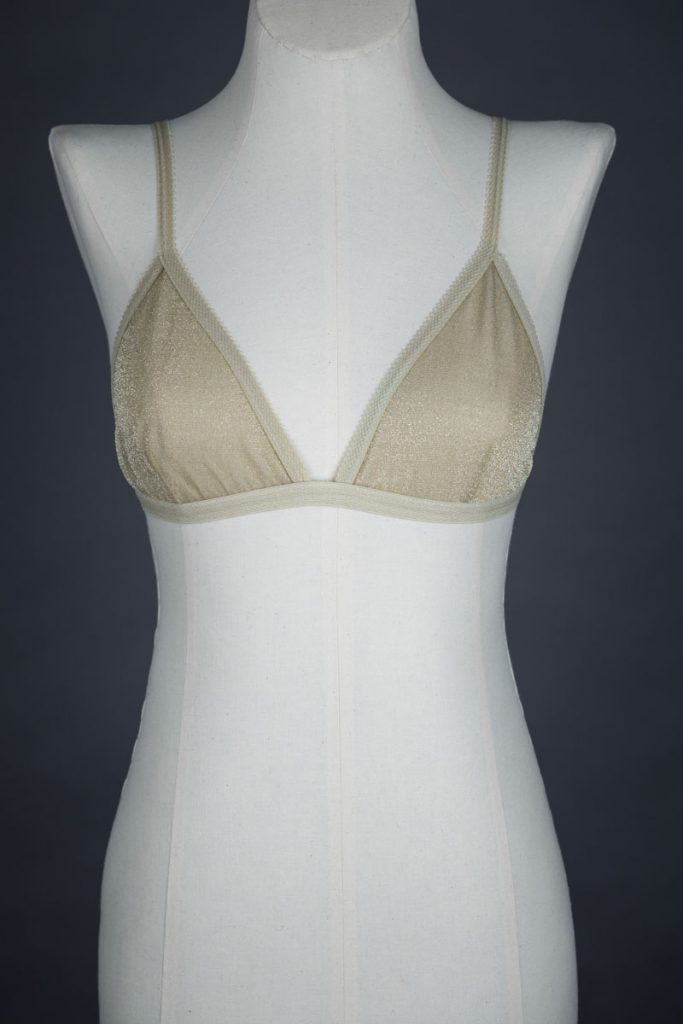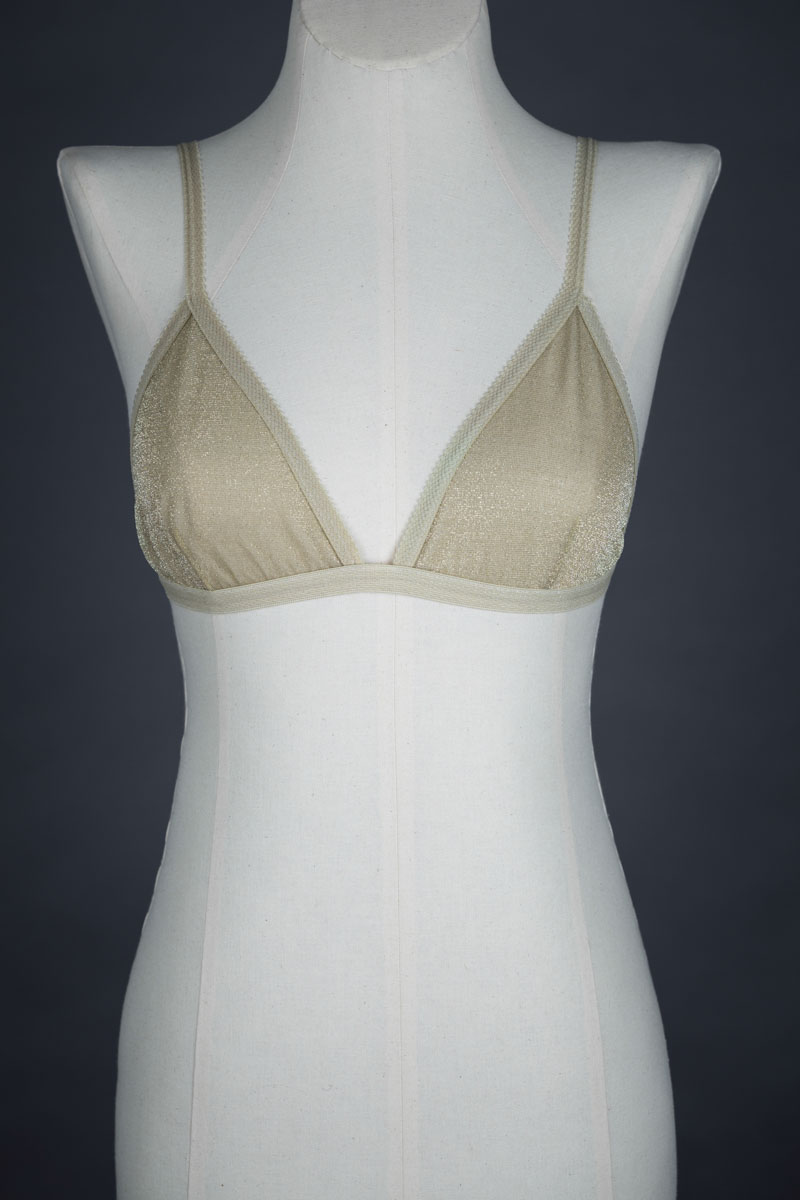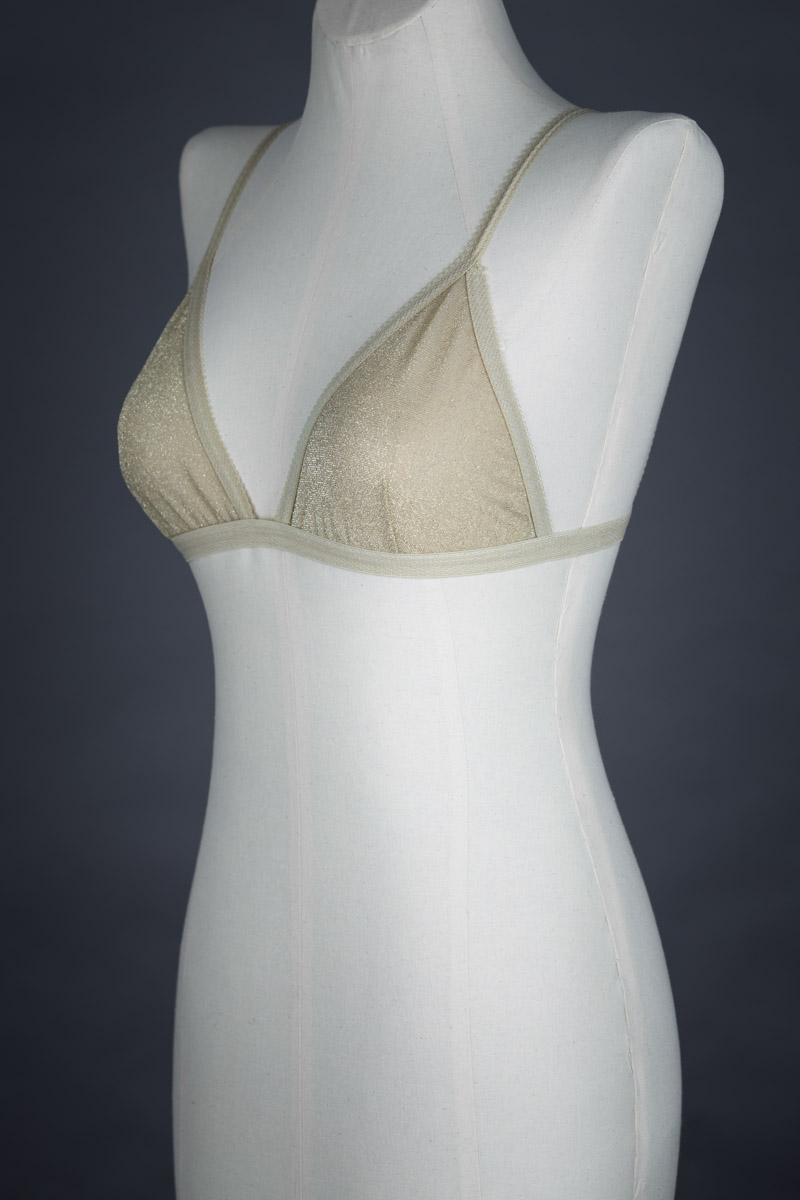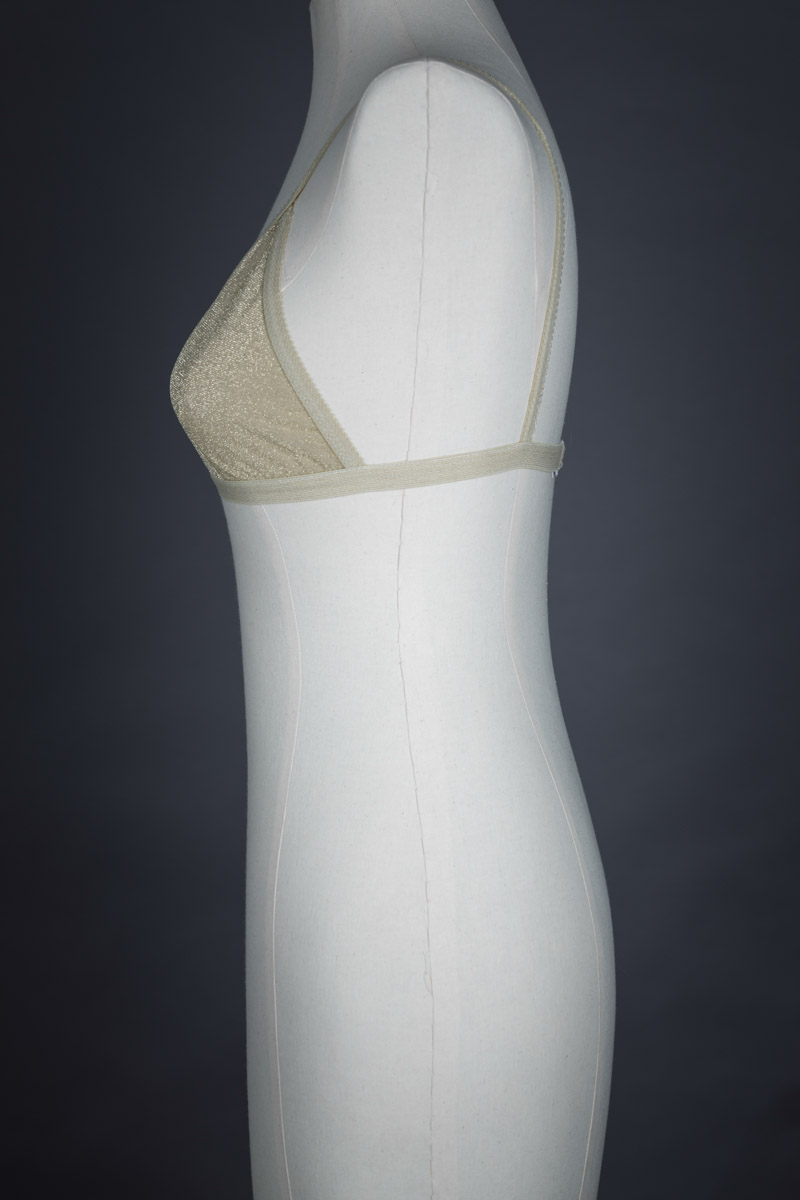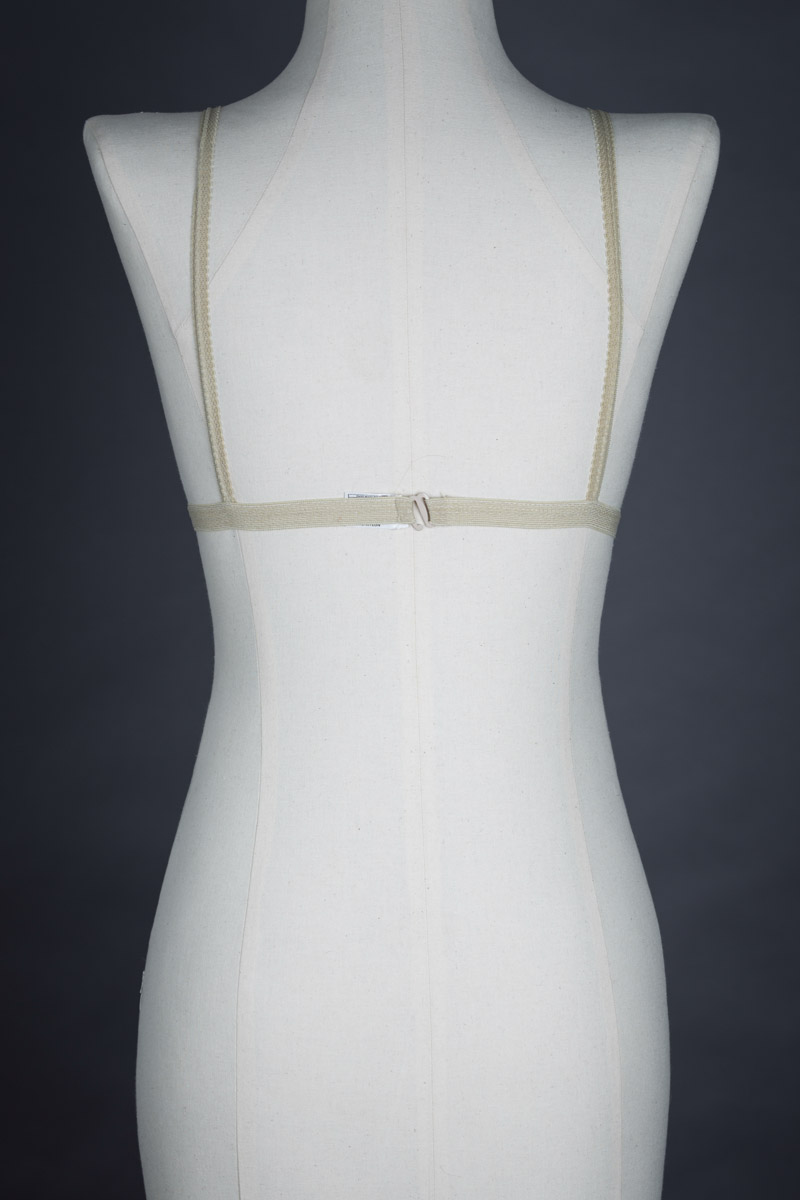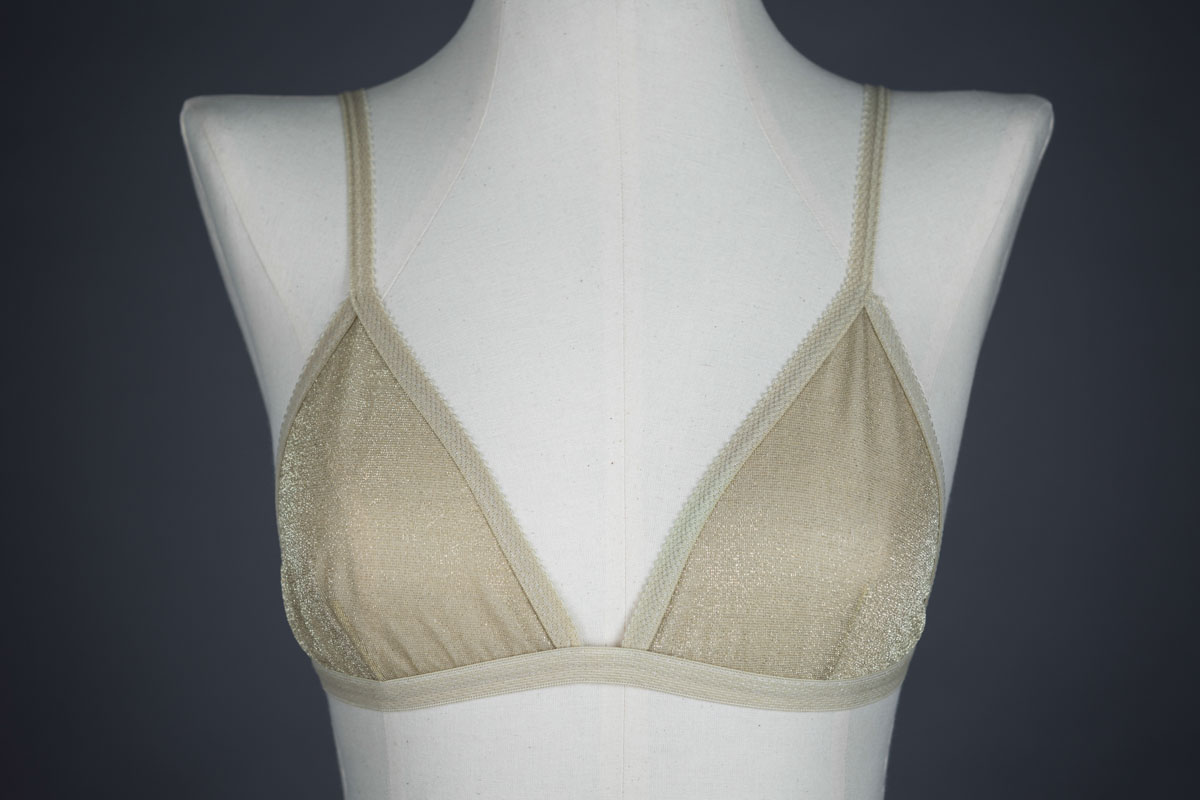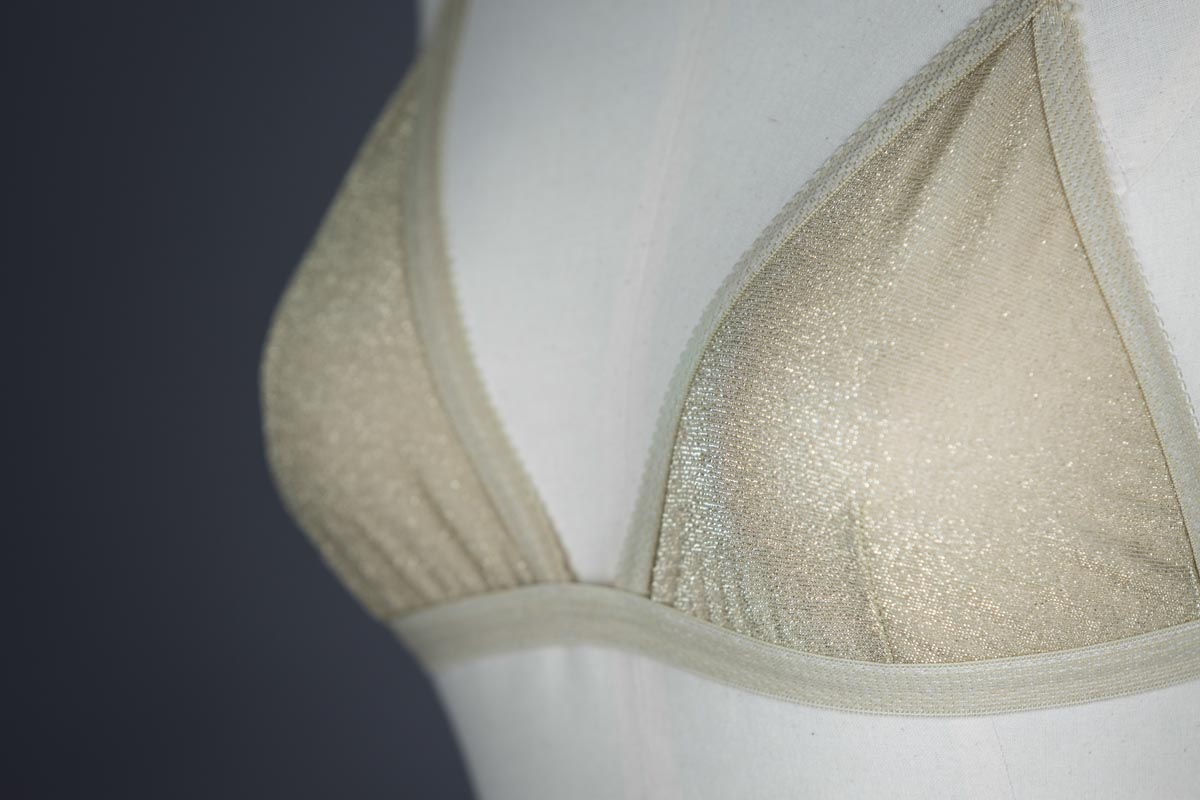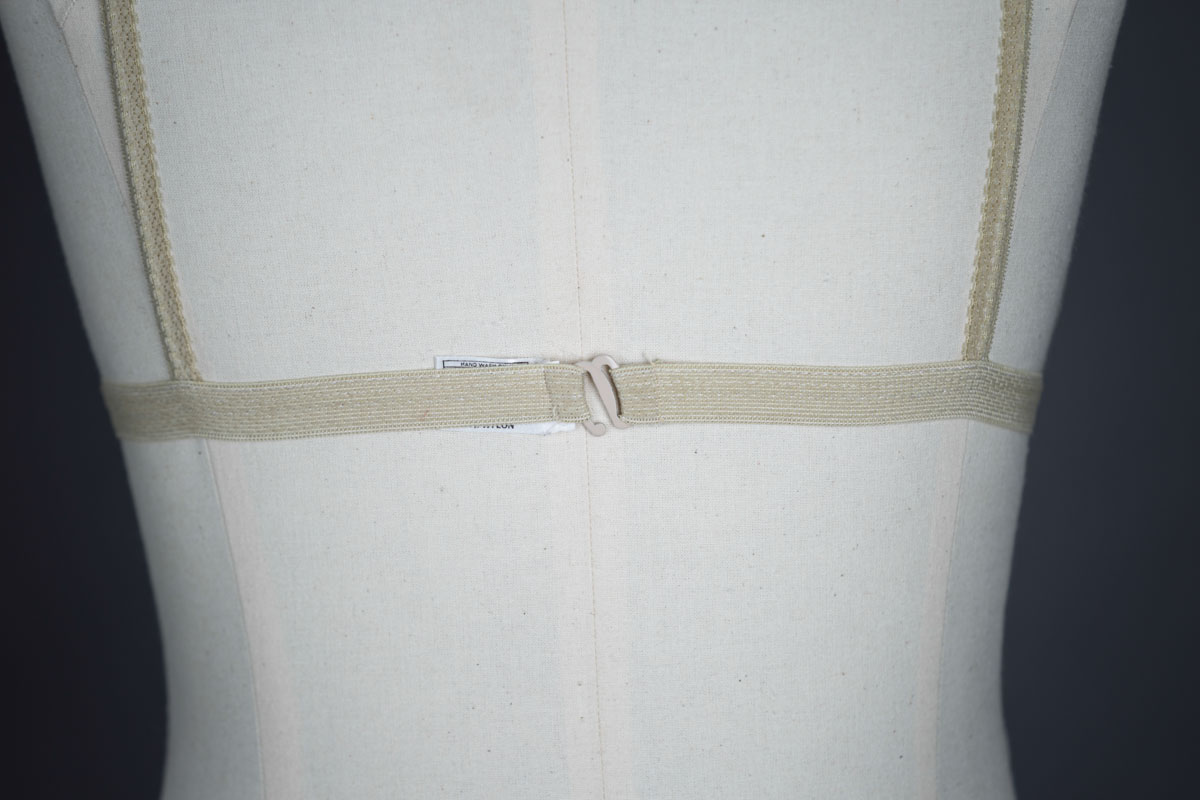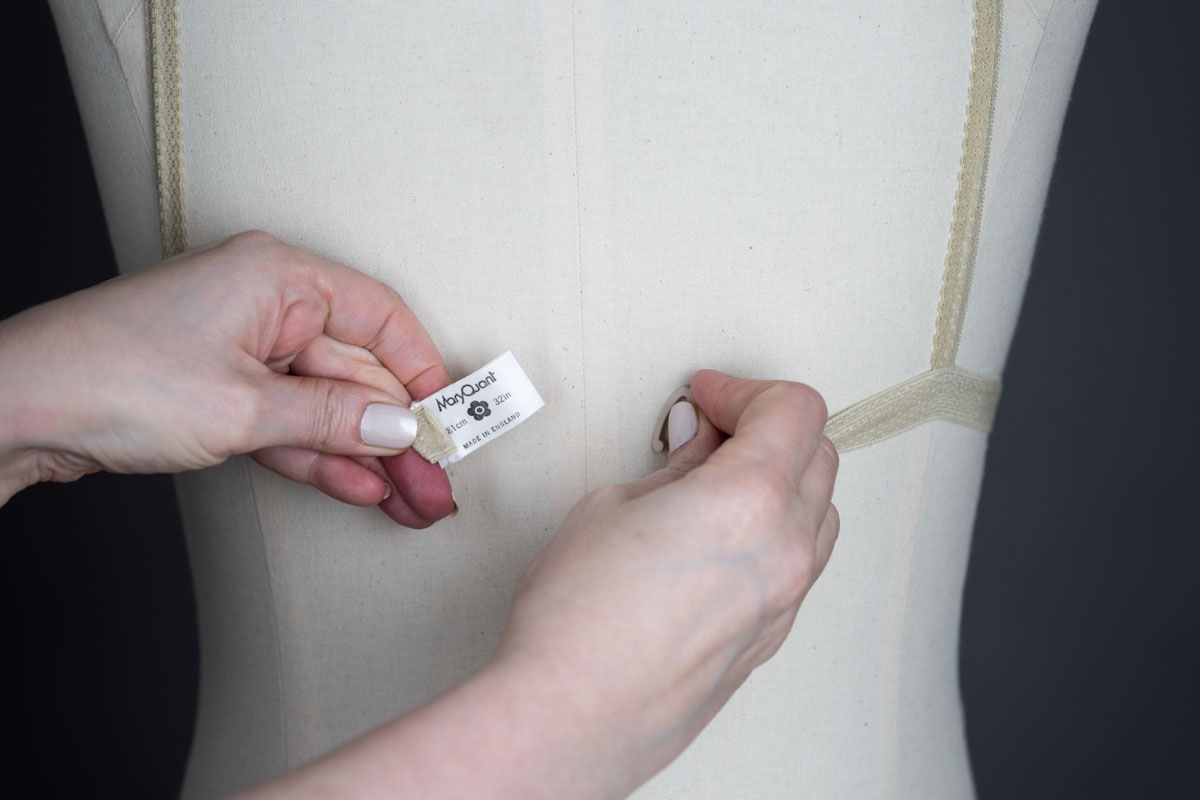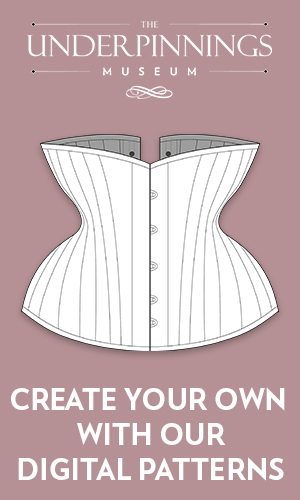Date: c. 1970s
Origin: Great Britain
Fabric: Lurex
Brand: Mary Quant
Estimated to be early 1970s (much like a similar style bra in the Museum of London’s collections). The Lurex Company was founded in 1973. Its yarns often have a polyamide, polyester or viscose film covering the metal strand and the softness of the fabric on this bra’s cups indicate that this may be constructed with Lurex fibre, although the label states that it is composed of 66% metallic fibre and 34% nylon. [compulsory fibre content labelling on garments in the EU (then called the European Economic Community) was introduced from 12 January 1976.]
The bra is simply constructed, with triangle style cups with a single dart for shaping. They are applied to an elastic band with a coverlock stitch. Shoulder straps are made with nonadjustable strips of elastic and the bra fastens with a single enamelled hook at the centre back.
Mary Quant opened her first boutique, Bazaar, on London’s King’s Road in 1955. She is said to have invented the miniskirt, but claims that it was actually her customers who invented it by always wanting shorter hemlines. She merely gave the style its name.
Famous for her youthful womenswear in 1960s ‘Swinging London’, she also designed patterned tights to be worn with her short skirts and hot pants, and branched out into other areas (including underwear, make-up and homewares) in the 1970s and 80s. Her husband, Alexander Plunket Greene, came up with catchy names for many of her product lines – bras were called “Booby Traps”. In her 2012 autobiography, Quant spoke of advising US retailer JC Penney on underwear in the 1960s:
“I later persuaded them to make more naturally shaped bras. Somewhere there exists a photograph of me, very small and mini-skirted, lecturing those very charming large American men about the shape of breasts. I remember, with some embarrassment, quoting Collette to them: ‘Breasts are shaped like half a lemon – the interesting half. They are not tennis balls.’ And so we arrived at very soft preformed fabrics with underwired structure and other natural-shaped bras to achieve what was called the ‘No-Bra’ bra effect.”
Although moulding techniques enabled the production of seam-free cups in the 1970s, this bra follows the style of the “No-Bra” patented by Rudi Gernreich for Exquisite Form in 1967, with a single dart for shaping on each cup.
From the collection of Lorraine Smith
